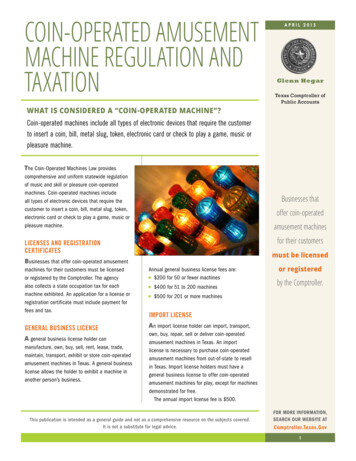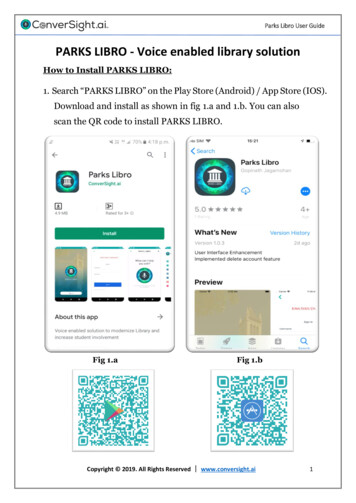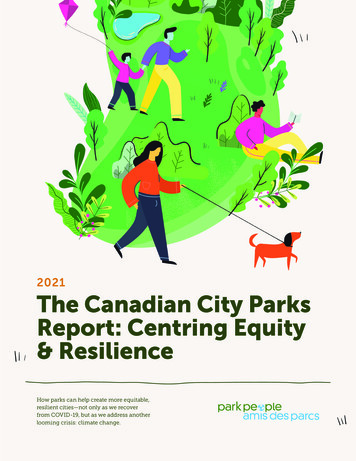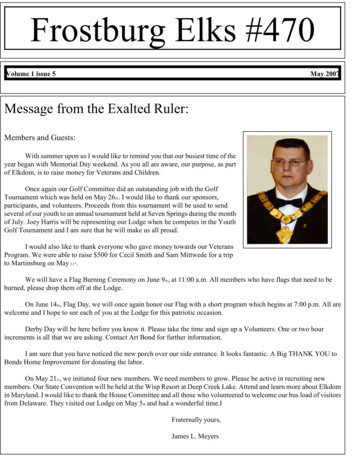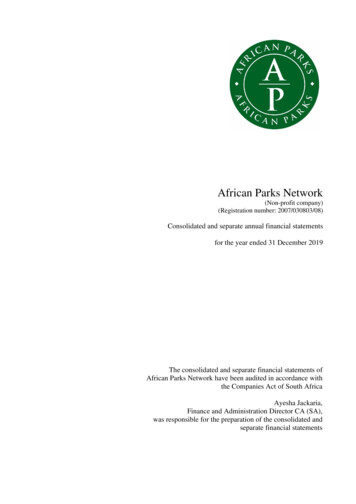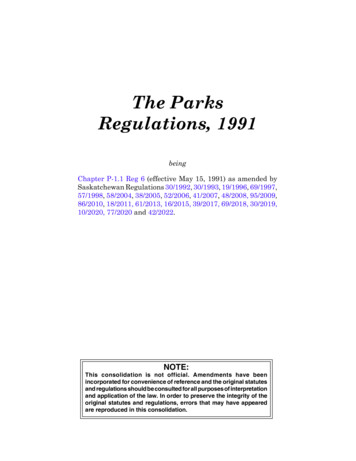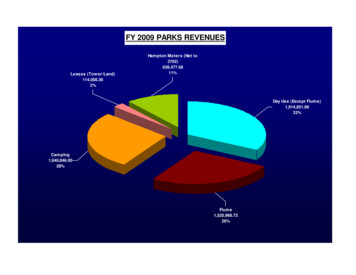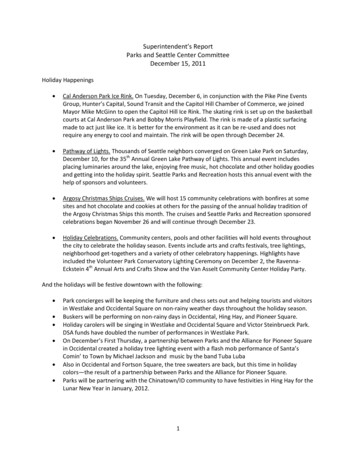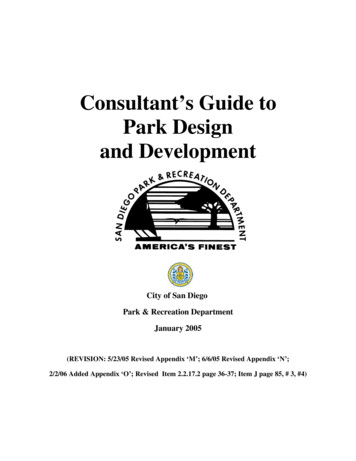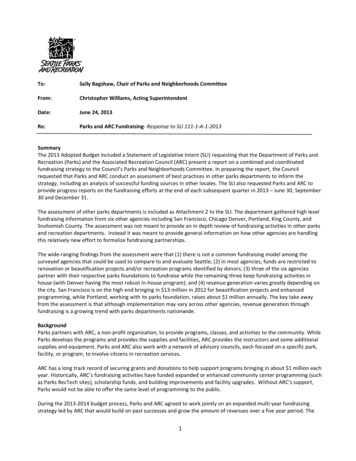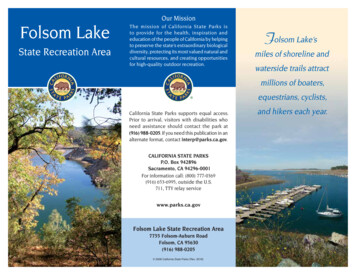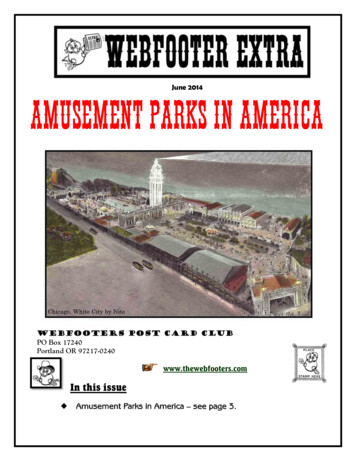
Transcription
June 2014Amusement parks in americaWebfooters Post Card ClubPO Box 17240Portland OR 97217-0240www.thewebfooters.comIn this issue Amusement Parks in America – see page 3.
The Largest Antique Paper Shows in the NorthwestThe Greater PortlandPostcard Stamp and Antique PaperShowJune 21-22, 2014Lloyd Center Double Tree Hotel Annex1000 NE Multnomah StreetPortland, OregonOld Postcards, Photographs, Stereo View Cards, Books, Stamps,Valentines, Matchbooks, Magazines, Prints,Maps, Trade Cards, Posters & Much, Much More!ADMISSION: 1Show Hours:Saturday:Sunday:10 AM – 6 PM10 AM – 4 PMUpcoming Shows in Portland, Oregon:October 18 - 19, 2014February 28 – March 1, 2015For Information:Terry Weis601 NW 72nd CircleVancouver, WA EE APPRAISALSFREE ADMISSION WITH THIS AD(paid advertisement)2
Amusement Parks in AmericaOnce upon a time, summer was a time for sea bathing, playing croquet, sailing and walking.Life didn’t have the hectic pace that keeps us distracted today. Thousands of people wouldflock to the beaches in the summers and especially on the weekends. Many people wouldeven seek out mineral springs, looking for medicinal benefits. Swimming was much morepopular in those days. The average home didn’t have running water, so baths were usuallytaken out of doors or on a trip to town.Coney Island became an amusement resort, as did many other towns along the ocean shore.It is considered to be the birthplace of the American amusement resort. Several luxuryhotels were built there in the 1870’s and a ten-mile railroad was extended there from thecity. Coney Island was described as “heaven at the end of a subway ride”. They also called itthe “Nickel Empire.” Every ride cost 5 cents and so did a hot dog or a pop.3
Carry-Us-All with wooden roosters carved by Charles Loof in the 1870’s.The famed artisan Charles Looff came to Coney Island from Europe in the 1870’s and hecarved wooden animals that were attached to a circular floor that turned in circles. Itopened in 1875 and it was known as a “Carry-Us-All” or carousel. Lamarcus Thompson builtthe world’s first roller coaster, the Switchback Railroad, in 1884 at Coney Island.Most of the early amusement resorts sprang up near population centers like Coney Island inNew York and Ocean Beach near the western edge of San Francisco. Nearly every major cityin America had at least one amusement park in the early years of the 20th century.One of the earliest parks, Chicago’s White City, grew out of the World’s ColumbianExposition of 1893. White City was the common name for dozens of amusement parks inthe United States, the United Kingdom, and Australia. Inspired by the White City andMidway Plaisance sections of the World's Columbian Exposition, the parks started gaining inpopularity in the last few years of the 19th century.4
The enormously successful World's Columbian Exposition attracted 26 million visitors andfeatured a section that is now commonly considered the first amusement park: a midway,the mile-long Midway Plaisance, the first Ferris wheel constructed by George Ferris,Thomas Rankin's Snow and Ice Railway, a forerunner of the modern roller coaster, whichwas later moved to Coney Island as well as lighting and attractions powered by alternatingcurrent. Sebastian Ziani de Ferranti had just completed the first power plant with AC powerin London only the year before.The Columbian Exposition also featured the debut of several foods that became popular inthe United States: the hamburger, shredded wheat, Cracker Jack, Juicy Fruit chewing gumand pancakes made using Aunt Jemima pancake mix. The Zoopraxographical Hall was thefirst commercial theater. Ragtime music composed and performed by Scott Joplin exposedmillions of people to a new form of music and it instantly became a staple for fairs andcarnivals.While the Midway Plaisance became the Exposition's main drawing card, it was not theprimary purpose of the World's Fair in the eyes of its founders, who pictured it to be thebeginning of a classical renaissance featuring electrically-lit white stucco buildingscollectively known as White City occupying the main court.5
While White City gave the park its visual identity, the throngs who attended the ColumbianExposition tended to collect at the Midway Plaisance and Buffalo Bill's Wild West Show,which set up shop just outside the park grounds after the fair's founders rejected Buffalo BillCody's attempt to become an official Columbian Exposition exhibitor.Chicago’s Columbian Exposition was destined to be remembered primarily for two ironicvisions, that of the crowds at the Midway Plaisance, with exhibitions of boxer John L.Sullivan and exotic dancer Little Egypt as well as its games and its rides, and thearchitecture of White City.Paul Boyton's Water Chutes, featuring a shoot-the-chutes ride that wasn't present in theColumbian Exposition, was the first amusement ride to charge admission when it opened in1894. Inspired by the immediate success of his Water Chutes with 500,000 people visitingin its first year of operation, Boyton moved and expanded his Water Chutes in 1896. In1895, Boyton also opened Sea Lion Park, one of the earliest embodiments of an amusementpark, at Coney Island with several rides, including a shoot-the-chutes, an old mill ride and asea lion show.An enterprising man named George Tilyou operated Coney Island’s first Ferris wheel in1894 at the Bowery, near the Iron Tower, which was built for the Philadelphia CentennialExposition in 1876 and moved to Coney Island a year later. Tilyou built several otheramusements that were scattered around Coney Island. In 1897, he consolidated all of hisrides into one place by his Ferris wheel. Tilyou called it Steeplechase Park.6
In the half decade after the end of the Columbian Exposition, the American concept of theamusement park was starting to take hold. White City amusement parks were making theirappearance in Philadelphia in 1898 (it was also known as Chestnut Hill Park) and inCleveland, Ohio in 1900. An explosion of nearly identical amusement parks soon followed.Parks were being erected at a frenetic pace.A typical White City park featured a shoot-the-chutes and lagoon, a roller coaster (usually afigure eight or a mountain railway), a midway, a Ferris wheel, games, and a pavilion. SomeWhite City parks featured miniature railroads. There were roughly 250 amusement ridesoperating in the United States in 1899; the number almost tripled to 700 by 1905; andmore than doubled again to 1500 by 1919.Railway companies, noticing the popularity of Midway Plaisance of the ColumbianExposition and the lack of railroad ridership on the weekends, constructed trolley parks asan effort to improve their bottom line. Power companies were starting to partner withrailroad companies to create electric trolley companies and construct “Electric Parks.”In 1901, partners Frederick Thompson and Elmer Dundy, operated the very popular ridethey called "A Trip to the Moon" at the Pan-American Exposition which opened in Buffalo,New York. They also opened a similar ride at Coney Island’s Steeplechase Park.7
Poor weather and bad economic conditions forced the closure of Sea Lion Park in 1902.Boyton sold Sea Lion Park to Thompson and Dundy who redesigned the park and reopenedit as Luna Park in 1903.A year later, in 1904, former New York State Senator William Reynolds opened Dreamlandto record crowds and his theme was “Bigger and Better”. Whatever Luna built, Dreamlandhad to build it bigger and better. Where Luna had 250,000 lights, Dreamland had a million.On opening day, 135,000 eager patrons visited the park.8
Some long-established parks changed their names to White City upon the addition ofamusement rides and a midway. Like their Luna Park and Electric Park cousins, many citieshad two (or all three) of the Electric Park/Luna Park/White City triumvirate in their vicinity,with each trying to outdo the others with new attractions.Roller coaster designer and entrepreneur Frederick Ingersoll provided many parks withfigure eight roller coasters and scenic railways long before expanding the Luna Park chainin 1905. Over a quarter century period, the Ingersoll Construction Company, erected morethan eleven roller coasters per year.The competition was fierce, often driving the electric parks out of business due to increasedcosts from equipment upgrades, upkeep and increasing insurance costs. Boyton's WaterChutes went out of business in 1908 in the face of increasing competition. More than a fewsuccumbed to fire. Only one park that was given the White City name continues to operatetoday: Denver's White City, which opened in 1908, is now known as Lakeside AmusementPark.Editor’s note:When I began collecting postcards in earnest 30 years ago, I was fascinated by the amountof history that was contained on postcards of amusement parks. I never dreamed it wouldlead me to where it has taken me today. Watch for more installments to come.9
Roller coaster designer and entrepreneur Frederick Ingersoll provided many parks with figure eight roller coasters and scenic railways long before expanding the Luna Park chain in 1905. Over a quarter century period, the Ingersoll Construction Company, erected more than eleven roller coasters per year.
